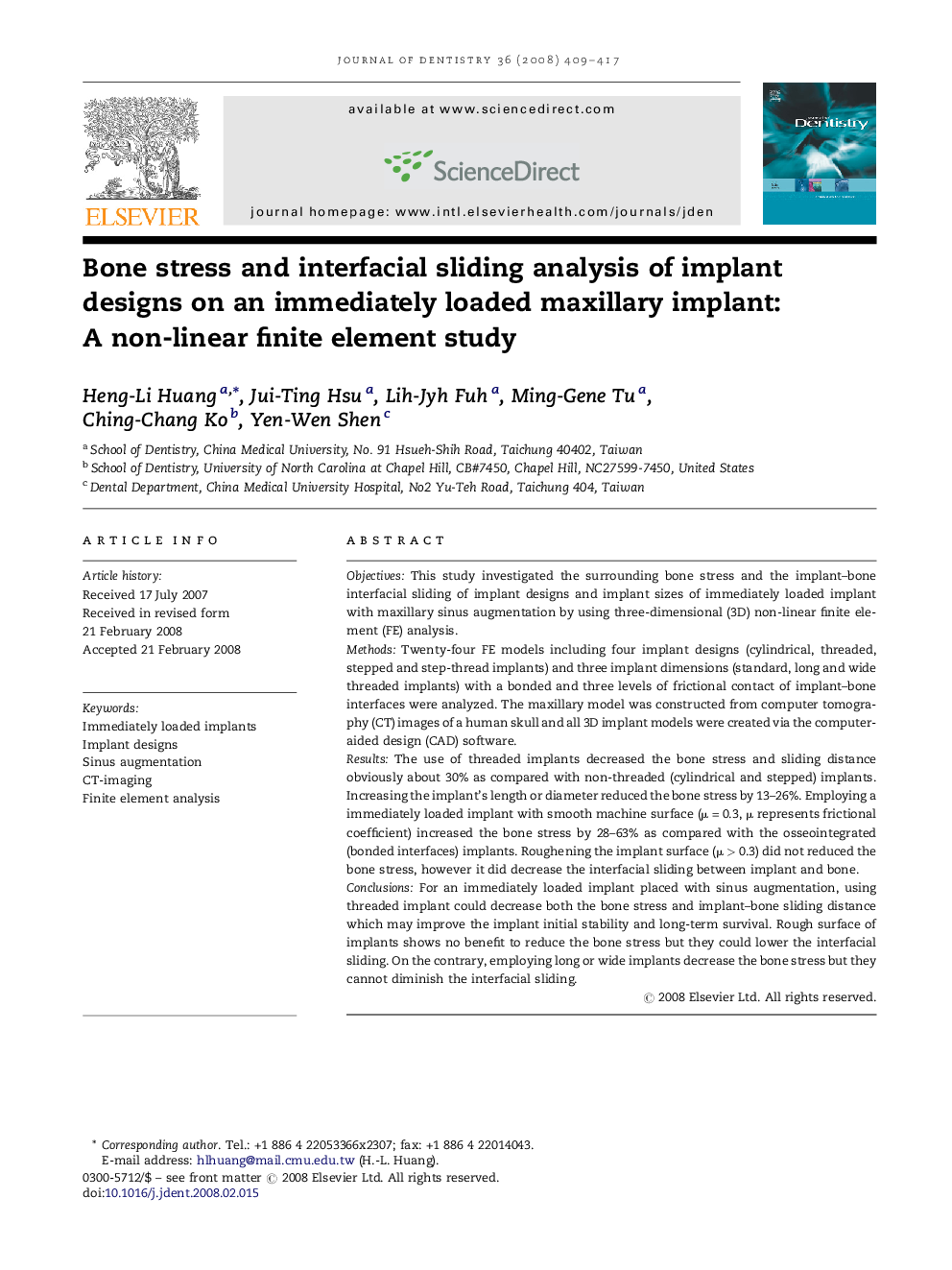| کد مقاله | کد نشریه | سال انتشار | مقاله انگلیسی | نسخه تمام متن |
|---|---|---|---|---|
| 3146178 | 1197158 | 2008 | 9 صفحه PDF | دانلود رایگان |

ObjectivesThis study investigated the surrounding bone stress and the implant–bone interfacial sliding of implant designs and implant sizes of immediately loaded implant with maxillary sinus augmentation by using three-dimensional (3D) non-linear finite element (FE) analysis.MethodsTwenty-four FE models including four implant designs (cylindrical, threaded, stepped and step-thread implants) and three implant dimensions (standard, long and wide threaded implants) with a bonded and three levels of frictional contact of implant–bone interfaces were analyzed. The maxillary model was constructed from computer tomography (CT) images of a human skull and all 3D implant models were created via the computer-aided design (CAD) software.ResultsThe use of threaded implants decreased the bone stress and sliding distance obviously about 30% as compared with non-threaded (cylindrical and stepped) implants. Increasing the implant's length or diameter reduced the bone stress by 13–26%. Employing a immediately loaded implant with smooth machine surface (μ = 0.3, μ represents frictional coefficient) increased the bone stress by 28–63% as compared with the osseointegrated (bonded interfaces) implants. Roughening the implant surface (μ > 0.3) did not reduced the bone stress, however it did decrease the interfacial sliding between implant and bone.ConclusionsFor an immediately loaded implant placed with sinus augmentation, using threaded implant could decrease both the bone stress and implant–bone sliding distance which may improve the implant initial stability and long-term survival. Rough surface of implants shows no benefit to reduce the bone stress but they could lower the interfacial sliding. On the contrary, employing long or wide implants decrease the bone stress but they cannot diminish the interfacial sliding.
Journal: Journal of Dentistry - Volume 36, Issue 6, June 2008, Pages 409–417